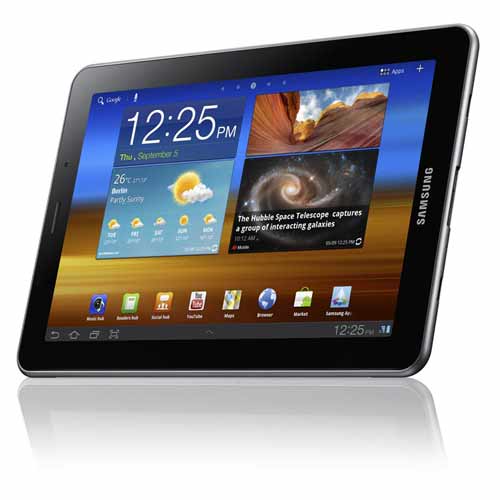It was yesterday that Samsung took covers off two fascinating products at the IFA conference underway at Berlin, Germany. Well, for starters, it looked like just another launch but I think this is part of a concerted move by Samsung to gradually fortify their presence in the smartphones and tablets sector – the latter which is still dominated by the iPad. Let’s see how.
We start with the first product – the Tab 7.7. For most, this would just be a shrunken version of the Galaxy Tab 10.1 and the 8.9 at a lower cost. This thing features a 7.7 inch Super AMOLED Plus display (which surely is an unorthodox size for a display), TouchWiz Ux interface running atop Honeycomb 3.2, a 3 megapixel camera at the rear, a 1.4 GHZ dual core processor and a 5100 mAH battery. The junior Tab would also be available in 16 GB, 32 GB and 64 GB variants with support for micro SD cards.

Now, the important thing to note here is that Samsung now has three tablets running Honeycomb spread across a wide price and screen size spectrum. The Strategy is clear; when you think of buying an Android tablet, (lets ignore the iPad for a while now; I know it’s kinda difficult!) they want you to think only about them. You want large display? Choose the 10.1; hate the bulkiness of 10 inch tablets? Hey, we have the 8.9 inch version with similar features. You find even the 8.9 inch bothersome and too large to carry around? Well, that’s why we have the new 7.7 inch version for you.
I found Samsung’s way of straddling two segments extremely appealing. They are positioning products between two distinct categories of products. More importantly, they are offering consumers a choice. This, I have felt, is always a pleasant thing.
Talking about choice, this is where Samsung’s other significant launch comes in to picture; the Samsung Galaxy Note. This is one product which seems to have an identity crisis. Here’s why. It’s much larger than most high end “monster” smartphones with a 5.3 inch Super AMOLED display – but much smaller than full-fledged tablets. It can make calls like a smartphone and runs the Phone specific version of Android – the Gingerbread. It also gets a stylus called the S-Pen that can be used for drawing pictures or taking notes. There is an 8 megapixel camera at the rear which also doubles up as your full HD video recorder should the need arise.

Here, too, Samsung’s intent is to straddle the wide gap that exists currently between smartphones and tablets. While Dell did try to do this almost a year ago with its Streak, it was never a mainstream product. With Samsung’s promotional powers and the stature it currently enjoys in the smartphone/tablet industry, things might be different in the case of the Galaxy Note.
Now, if you look at the entire Android lineup from Samsung; it has virtually one product across all segments. With the Galaxy Note, they just created an entire new segment I might as well add. All that remains to be seen is whether the idea of straddling a device between high end smartphones and entry level tablets is such a brilliant idea after all. Over to you, the public!





